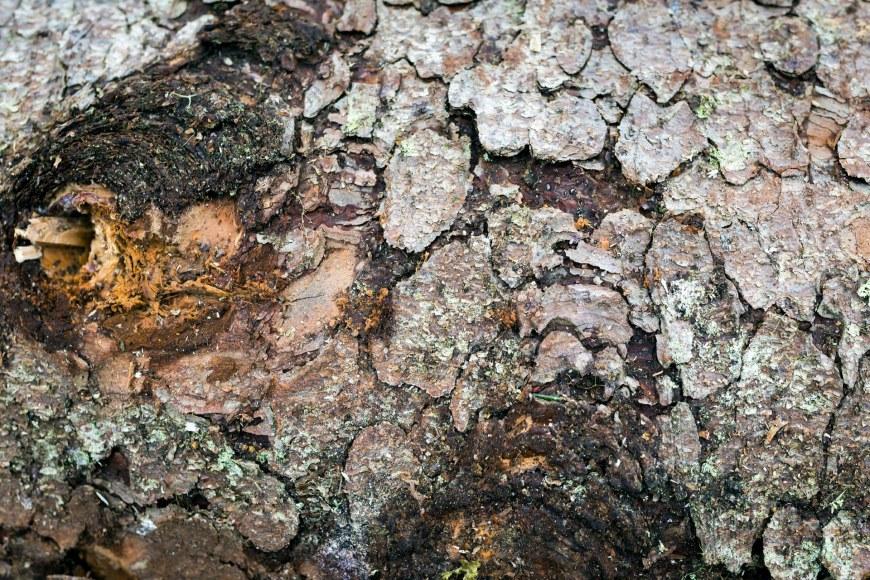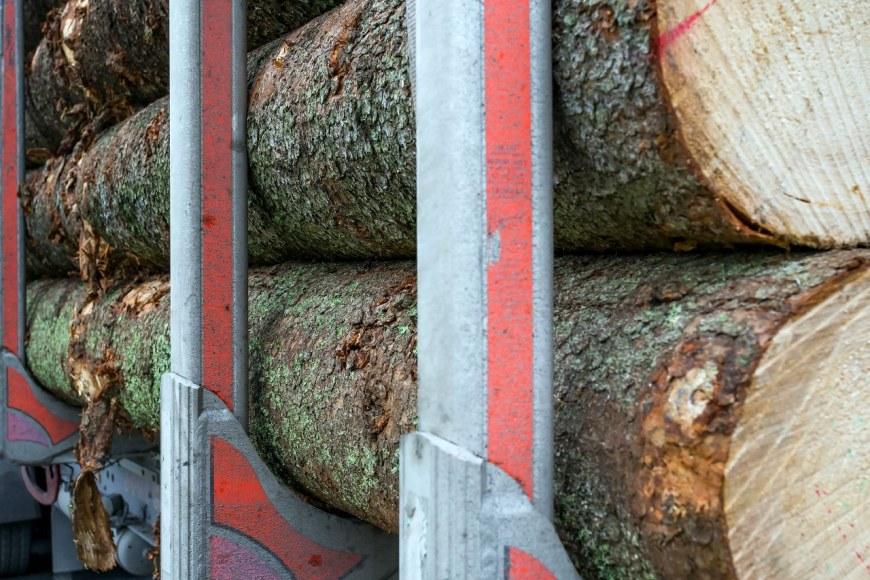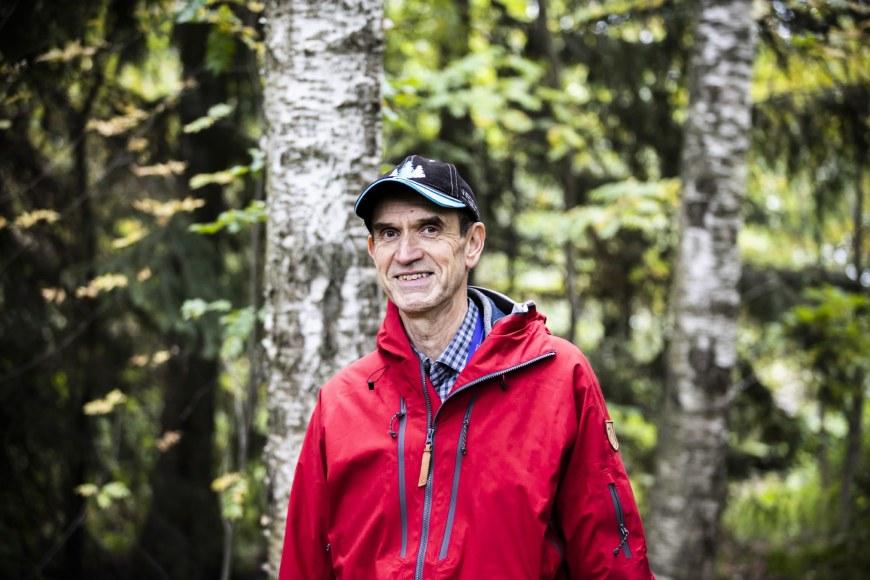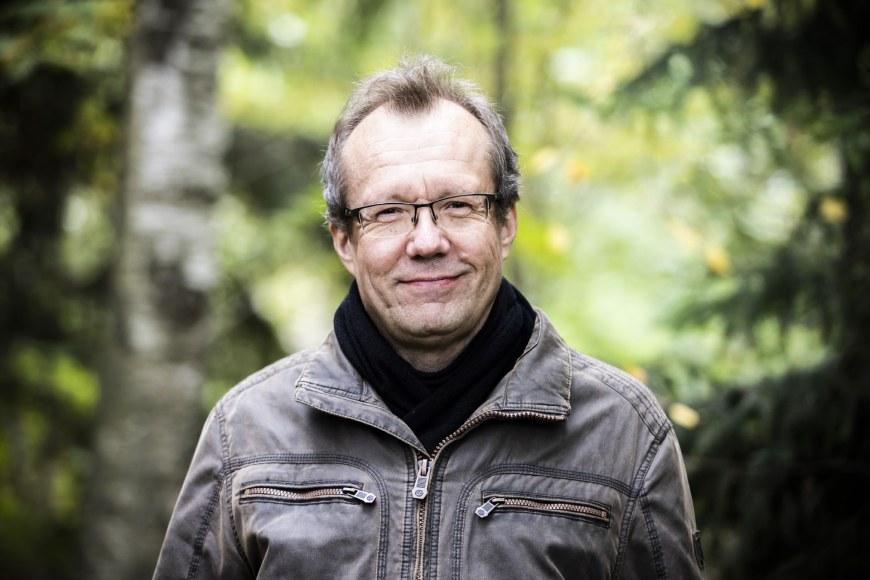Money grows on coniferous trees

Let’s give you the good news first. Forests are growing rapidly in Finland.
“Our forest resources are now more abundant than they have ever been since the start of the measurements. Pests and pathogens are also fairly well under control,” says Ari Vanamo, head of the Degree Programme in Forestry at Tampere University of Applied Sciences (TAMK).
Forests are an important source of livelihood in Finland. The forest industry employs approximately 42,000 people in Finland, and forests also bring economic benefits to forest owners. In 2019, private forest owners banked about €2 billion in so-called gross stumpage earnings.
“Annual growth exceeds removals through harvesting,” points out Petri Keto-Tokoi, forest officer and lecturer in forest ecology at TAMK.
“In addition, 80% of animal species found in forests are widespread and abundant. These are species that are not dependent on old-growth forests, old trees or dead trees,” Keto-Tokoi says.
While our forests appear to be doing just fine, the situation is, in fact, more complex.
Scarcity of mixed-species forests affects biodiversity
If you fly across Finland, the country looks green, and Finland is indeed a heavily forested country. However, there has been a shift from natural forests to managed forests with mainly one or two species of trees. In the majority of our forests, more than 75% of the trees belong to the same species.
Finland’s forests are made up primarily of pine and spruce, and they are mostly young forests.
“The problem with Finland's forests is the loss of biodiversity. One percent of the animal and plant species that live in forests have gone extinct, nine percent are endangered, and seven percent are vulnerable,” Keto-Tokoi says.

Besides trees, forests provide a natural habitat for animals, fungi and plants. When forests are dominated by one or two species of young trees, many of these habitats disappear. What contributes to this problem is our perception of forests: we tend to see only the trees, not the forest and all the wildlife living in it.
“A one-sided economic approach to forest management has been very dominant in Finland for a long time,” Keto-Tokoi notes.
The era of large-scale forest industry began in the 1870s in Finland, but even before this, forests were being cleared to grow crops, raise livestock and stockpile fuelwood. The resulting impact on the forests surrounding the densely populated areas in southern and central parts of the country was significant, whereas forests located in remote areas in the south as well as in northern Finland were still largely untouched in the early 1900s.
Finland is by far the most heavily forested country in Europe.
Forest industry has since become a major driver of economic growth in Finland, first in the form of lumber and then pulp and paper. The product portfolio has since widened to also include new bio-based products. Forests have been managed to grow trees with the greatest value.
“Money is made from coniferous trees. Birch is a fine example of Finland’s native trees, but there does not seem to be a market for birch plywood. And similar short-fibred deciduous trees that are used as raw material for pulp also grow in more southern climates,” Vanamo says.
Forests absorb 50% of Finland’s carbon dioxide emissions
With roughly 20 million hectares of forestland, Finland is by far the most heavily forested country in Europe. Owing to its large but young forest biomass, it is also one of the most effective carbon sinks in the continent.
We often come across the word carbon sink when reading about climate change, but what is it exactly?
Here’s a quick rundown: When carbon dioxide is released into the atmosphere, it prevents heat from escaping into space and warms the planet. Trees and plants capture and store carbon dioxide. Plants convert carbon dioxide into oxygen as a by-product of photosynthesis.
Forests help our planet breathe. This is why tropical rainforests are called the lungs of the Earth – although they may now look like the lungs of a heavy smoker more than those of a marathon runner due to the land-clearing fires in Brazil.
In 2019, Finland’s forests absorbed a net 25.6 million metric tonnes of carbon dioxide (CO2-eq). Carbon sinks offset, on average, about 10% of emissions in the EU and about 50% in Finland.
“Finland’s forests are able to store quite a large amount of carbon. Still, forests act as carbon sinks only for as long their growth rate exceeds their harvest rate,” Vanamo says.

Keto-Tokoi is mildly amused by all the talk about carbon sinks. This is not to say that carbon sequestration is not important. It is just that the media often focus on one story at a time.
“I have found it annoying lately that carbon sinks dominate so much of the public discourse on forests, whereas biodiversity – which is at least equally important – is largely overlooked.”
Animals depend on diverse forests
An estimated 3% of Finnish forests are untouched by human interference.
“While the majority of our forests have been managed at some point, they are still valuable for biodiversity,” Keto-Tokoi points out.
According to Keto-Tokoi, the importance of biodiversity for ecosystems and the well-being of our planet has been understood at least since the early 1990s, but it is only recently that the loss of biodiversity has started to make headlines. The best time to do something was 30 years ago, the second best is now.
“There are 5,000 or so species of animals, plant and fungi in Finland that depend on decaying trees,” Keto-Tokoi says.
The accumulation of dead and decaying wood on the forest floor is reduced when forests are managed and harvested primarily from an economic perspective. This also affects animal habitats.
Public discussion has become very polarised in this area.
The willow tit was the fourth most common bird species in Finland in the 1950s, but nowadays seeing one is a rare occurrence. Willow tits carve out nest cavities in decaying birch stems, but now they have a difficult time finding enough food and a nesting spot from the forest.
The disappearance of a single insect species can threaten the food chains of multiple animals.
“All organisms have their own niche in the ecosystem and an inherent right to exist. Maintaining biodiversity is important because all plants and animals play a role in nature’s cycles. We cannot know how much damage these cycles can take,” Vanamo says.
The pros and cons of clear-cutting
The topic of clear-cutting has been frequently covered by the media in recent years. The advantages and disadvantages of both clear-cutting and continuous cover forestry have also been widely debated by self-proclaimed experts. Few people own any forest, but many have an opinion.
“Public discussion has become very polarised in this area despite the fact that Finland’s forests are growing and doing fine. But we can always do better,” Vanamo says.

A large clearing in the middle of the woods with the deep, criss-crossing tire tracks of a forest harvester is, admittedly, a sorry sight. Clear-cutting has a negative effect on biodiversity as well. Although some retention trees are always left standing, effective harvesting means there are no decaying trees left to provide vital habitat to many species.
With clear-cutting, animals also lose their shelter – which can be beneficial for some species of predators, such as some owl species.
Vanamo understands the critics of clear-cutting, but points out that clearings also occur naturally, for example, as a result of forest fires.
“There is no fear of open spaces in nature. Some seeds always remain, and gradually the forest begins to regenerate. And to preserve biodiversity, it is important to grow native trees,” Vanamo says.
Continuous cover forestry is not always the right way to go
All forests cannot be, nor do they need to be, mixed-species forests. However, forestry and forest management have played a part in the increase of monoculture forests. Mixed-species forests account for only about 14% of Finland’s forest cover. Forest owners have preferred pine and spruce that can be cut into value-added products, such as planks and boards.
“Clear-cutting does not reduce the number of tree species in itself, because birches, rowans and aspens will begin to recolonise the area. What has a bigger impact is the removal of deciduous trees after five or ten years to make more room for conifers,” Vanamo describes.
An alternative to clear-cutting is so-called continuous cover forestry, an approach to forest management where the forest canopy is retained and only trees that can be used for lumber are harvested. The method requires more precision than clear-cutting and is therefore more costly. The upside is that forest owners can maintain a steadier flow of income with continuous cover forestry as opposed to clear-cutting, after which it will take 60-80 years for the forest to mature.
We should start seeing the forest for the trees.
“However, things are not as black and white as they may seem,” Vanamo notes. The average size of Finnish forest estates is 30 hectares, and there are always areas where the trees are at different stages of maturity.
“One hectare of forest can be clear-cut every three years without the harvest rate ever exceeding the growth rate. In addition, younger forests are thinned to promote growth. This is one the facts that is often ignored,” Vanamo says.
“Continuous cover forestry is not a silver bullet that could solve the conflict between forest economics and biodiversity. Even if the forest canopy is retained, old-growth trees will not appear out of nowhere but must be purposely left in the forest,” Keto-Tokoi notes.
We must prepare for climate change
Keto-Tokoi finds that we should start seeing the forest for the trees. Forests store carbon and support countless species, without which our world would be a very different place. To promote this transition, we need to challenge the existing approach to manage forests from a largely economic perspective, according to Keto-Tokoi.
“We need synergistic solutions that take into account both perspectives. For example, we should increase the areas of protected forest and protect wetland forests from drainage as they act as large carbon reserves,” Keto-Tokoi says.

“It is difficult to say for sure how late we are in addressing climate change. What is certain is that an increase in average temperatures will also affect the forests in Finland. Boreal conifers, especially spruce, are sensitive to warming, whereas deciduous trees will benefit from higher temperatures,” Keto-Tokoi says.
“Besides mitigating climate change, we must take steps to adapt to it. To do this, we must diversify the species of trees cultivated in our forests. Finland’s forest industry has traditionally relied heavily on coniferous trees, but now is the time to start considering the potential uses of other species of trees, such as birch, aspen, common alder and noble hardwoods, which will fare better in Finland in the future.”
Private persons own forest in the south and the government in the north of Finland
Finland is the most heavily forested country in Europe. Of Finland’s total land area, 75% is covered by forests. Productive forestland covers approximately 20.3 million hectares and poorly productive forestland 2.3 million hectares. Finland’s forest cover alone would make it the 10th largest country in Europe.
Approximately 60% of Finland’s forestland is privately owned. In the southern and central parts of the country, private persons and families own as much as 75% of forests. The government owns 26% of forests, with the majority of them located in eastern and northern Finland.
Depending on the definition, there are 22–30 native species of trees growing in Finland, most of them deciduous trees. The most common trees found in Finland are pine, spruce and birch (both downy birch and silver birch). Next on the list are aspen, grey alder and common alder, bird cherry, goat willow and rowan. Pine and spruce that are so important to our forest industry account for 80% of our forests.
Forests are an important natural resource for Finland. In 2018, the forest industry contributed more than €23 billion to Finland’s gross domestic product (GDP) and accounted for about 20% of all exports.
Forests also play an important role in mitigating climate change. In 2019, the trees and soil in Finnish forests absorbed a net 22.9 million metric tonnes of carbon dioxide (CO2-eq).
Tampere University of Applied Sciences (TAMK) offers a Degree Programme in Forestry. Approximately 30–40 new students enrol on the programme on an annual basis. On average, TAMK receives three to four first-choice applications for every spot in the programme. In the past few years, graduates from the programme have enjoyed excellent employment rates and have typically found procurement roles in forest industry or specialist roles in the Forest Centre of Finland, local forestry associations or the forest agency Metsähallitus.
Author: Juho Paavola








